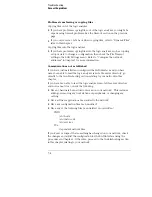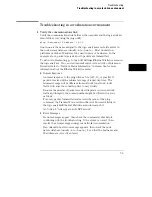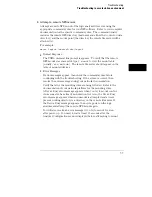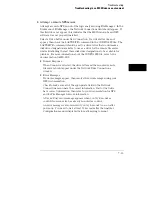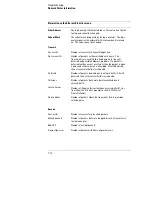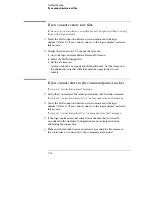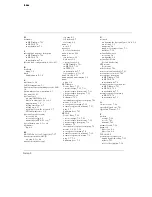
Status Bits (continued)
Bit 6
The TRANS (Transceiver, such as Ethernet transceiver) bit indicates
whether the circuitry between the LAN IC and the LAN cable is
functioning. If this bit is not set, then the path between the LAN cable and
the LAN IC is operating properly. If this bit is set, then either the CPU
board or the I/O board must be replaced.
Bit 7
Timeout bit. If the Timeout bit is set, then bits 4, 5, or 6 will also be set.
Refer to the appropriate bit for a suggested course of action.
Bit 8
The Tx bit indicates whether the transmission portion of the MAC, ENDEC,
or TRANS test failed. Therefore, the Tx bit is used in conjunction with bits
4, 5, and 6. Refer to the appropriate bit for the suggested course of action.
Bit 9
The Rx bit indicates whether the receive portion of the MAC, ENDEC, or
TRANS test failed. The Rx bit is used in conjunction with bits 4, 5, and 6.
Refer to the appropriate bit for the suggested course of action.
Bit 10
The Parameters bit indicates the integrity of the LAN module self-test
parameters. If this bit is not set, then the parameters sent to the self-test
routine are correct. If this bit is set, then contact your nearest Agilent
Technologies Sales and Service Office.
Bit 11
The EPROM that is used to hold the Ethernet address, IP address, and
gateway address has been corrupted. If this bit is set, the LAN board
must be replaced.
Bits
12–15
Not Used
Troubleshooting
Status Number
7–18
Summary of Contents for 1660 CS Series
Page 7: ...1 Connecting and Configuring...
Page 16: ...1 10...
Page 17: ...2 Accessing the Logic Analyzer File System...
Page 25: ...3 Using the X Window Interface...
Page 37: ...4 Retrieving and Restoring Data...
Page 50: ...4 14...
Page 51: ...5 Programming the Logic Analyzer...
Page 64: ...5 14...
Page 65: ...6 Concepts...
Page 72: ...6 8...
Page 73: ...7 Troubleshooting...
Page 104: ...Index Index 4...

